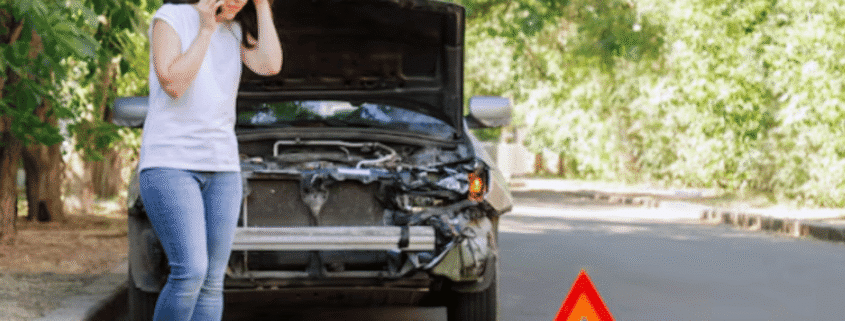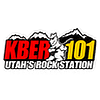Safe Roads, Safe Families: How to Avoid Car Accidents in Utah
Utah roads can flip fast. Dry skies turn to snow near Parleys. A clear drive on I-15 slows to a crawl by a work zone. Good habits keep you safe when the road changes without warning. This guide comes from real Utah driving, not classroom theory.
You will learn simple steps that lower risk year round. We will talk about focus, speed, space, intersections, weather, night driving, and car care. We will also cover what to do after a crash so stress does not make things worse. Use this as a family plan. Share it with a new driver, an older parent, or a friend who commutes the Wasatch Front.
If a wreck happens, a car accident lawyer in Utah can help you sort out the next steps, but the best win is avoiding the crash in the first place.
Key Points You Should Know
- Phones down, eyes ahead, hands on wheel
- Slow early for snow, rain, fog, and wind
- Leave three to four seconds of space
- Scan left and right at every intersection
- Signal early and avoid last-second moves
- Keep tires, brakes, and lights in shape
- Teach teens rules for phone-free driving
- Plan routes and set maps before driving
Utah Roads and Seasons: What Changes, What To Expect?
Utah gives you a little of everything. Busy interstates along the Wasatch Front. Canyon grades that test brakes. Rural lanes where deer step out at dusk. Your plan should match the day and the place. In summer, heat builds on long drives from St. George to Salt Lake, which can raise tire pressure and stress weak tread. In fall, wet leaves and early flurries turn slick fast. Winter brings black ice on bridges and shaded corners. Spring adds heavy rain and quick mud near construction.
The first habit you should start is one minute long. Don’t go unless you have checked the weather forecast and road alerts. If you see snow in Big Cottonwood or high winds on I-80, aim for extra time and a calmer pace. Pick routes with better lighting for night trips. If you drive a canyon, turn on your lights early so others see you sooner. On rural stretches near Cache Valley, slow five miles per hour at dusk and scan for eye shine along the shoulder.
Think in zones. City streets need patience for lights, bikes, and turns. Interstates need steady gaps and smooth lane changes. Canyons need good traction and firm focus. Your job is simple. Match the zone to your speed and your attention, then give yourself room to work.
Quick Utah cues to remember
- If the road is shiny in winter, test grip with light braking.
- If wind rocks your car on an overpass, ease off the gas.
- If slush builds in lanes, stay centered and avoid deep ruts.
Keep Your Focus: Everyday Choices That Prevent Crashes
Most crashes begin with a small slip in attention. A quick glance at a text. A lid that pops off a drink. Reaching for a purse on the floor. Build a cockpit routine that keeps your mind on driving. Set the map and music while parked. Mount your phone where you can see it without looking down. Turn on Do Not Disturb so alerts wait until you stop. If a child needs help, pull into a safe lot rather than trying to solve it while moving.
Use short, steady scans. Every few seconds, sweep mirrors, check your speed, and read the next sign. At a light, resist the urge to scroll. You think you have time, then the car ahead moves and your late start triggers a chain of hard brakes behind you. Keep food and drinks for rest stops. A few minutes off the road is much safer than juggling a cup at sixty miles per hour.
Make your own family rule. Focus on the road, hands on the wheel, and keep your mind on the task. Say it out loud with new drivers. Practice it yourself when you are late or stressed. Focus is not luck. It is a choice you make before the car moves.
Speed, Space, and Stopping Distance: Give Yourself Room
Speed does more than change how fast you arrive. It shrinks your options when something goes wrong. The fix is simple. Leave space. On city streets, hold at least a three second gap to the car ahead. On the interstate, aim for four seconds or more. Add another second for each risk factor like rain, darkness, towing, or heavy cargo.
Count it. If you pass a sign or crack, say one-one-thousand, two-one-thousand, three-one-thousand. If you reach the same marker before you finish, ease back. This small habit will help you drive more calmly and prevent hard braking. Reacting with more time also lowers your chances of being rear-ended in a crash.
Match speed to sight distance. Slow down before entering a curve, crest, or spray if you cannot see far ahead. Off-ramps should be braked earlier when it is wet. Drop your speed when you see cones in work zones, not when you reach them. You should move right when safe if someone crowds your bumper. Educating them is not your goal. You want to get home as soon as possible.
Intersections and Left Turns: A Simple Routine
Intersections are where people guess, hurry, or get lost in thought. Remove guesswork with a set routine. As you approach, ease off the gas and scan left, right, then straight again. Watch wheels, not faces. Even without seeing the driver’s eyes, the wheels move. Watch carefully for walkers, bikes, and scooters in crosswalks.
When turning left, make sure your car’s wheels are straight. You won’t be pushed into oncoming traffic if someone hits you from behind. Pick a clean gap. If the weather is wet or icy, choose a larger one. Be aware of red-light runners when the light turns green by counting a heartbeat before moving. You can save your life with this one-second habit.
Signal early. To make a turn, avoid making a last-second lane change. Keeping going and turning around if you miss it is the best option. Don’t take a right on a red. When you reach the crosswalk, stop fully, check to see if there is a walker and check if there are any bikes coming from the left. It is better to take small, steady steps than to move quickly and riskily.
A left-turn checklist for busy Utah roads
- Wheels straight while waiting.
- Pick a clear, not tight, gap.
- Look for late cross-traffic before you roll.
After a Crash: First Steps That Protect You
It’s the fact that even careful drivers can get hit. If this happens, don’t worry, and take a deep breath. And follow a short checklist if it happens. Make sure there are no injuries. Call Utah police helpline.
Make sure the hazard lights are on. If the cars can move, get to a safe spot. Do not argue at the scene. Share names, plates, and insurance. Take photos of damage, positions, street signs, and any skid marks. If there are witnesses, ask for contact info.
See a doctor the same day. Some injuries show up later. Keep receipts and start a simple timeline in your notes app. When an insurer calls, stick to facts and avoid guessing.
Skip social media posts about the crash. They can cause headaches later. Focus on your health, your car, and your plan forward. Calm steps beat fast ones here too.
Hire the best car accident injury Lawyer in Utah – Cockayne Law
When injuries are serious, steady guidance matters. Chris Cockayne, the best personal injury lawyer in Utah, and his team at Cockayne Law are known for clear talk and careful work. They listen first, then map the next steps so you are never guessing. They help gather records, photos, and statements, and they deal with insurers so you can focus on getting better.
Utah cases often turn on details. Who had the right of way, what the weather was doing, what traffic cameras show, and how medical notes are written. A seasoned car accident attorney in Utah knows which facts move the needle and how to get them. If you need a second opinion on a low offer, they can review it and explain what is missing. If you want options for medical bills or lost pay, they can outline paths that fit real life.
If you want local help that speaks in plain words, a car accident lawyer in Utah can walk you through choices without pressure. For many families, a short call brings calm. Please contact Cockayne Law if you require support and we will advise you on what your next step should look like.
Conclusion
Safe driving in Utah is not a trick. It is a few simple habits you repeat every day. Plan your route. Put the phone away. Leave space. Respect weather and canyons. Keep your car ready. Teach these ideas at home and talk about them after each drive. If a wreck happens, take care of your health. And ask questions before you make big decisions. A quick talk with a car accident attorney in Utah can bring clarity when you need it most. Share this guide with your family.
FAQs
What are the most common causes of crashes here?
Distraction, speed that does not fit the moment, and rushed turns. Phones pull eyes off the road, short gaps remove options, and late moves at intersections create surprises. Build a routine that keeps your mind on driving, leave three to four seconds of space, and pick clean gaps for turns. These simple steps remove most daily risks.
How can families cut teen driver risk?
Make a short list of rules and follow them yourself. Phones down while moving, seat belts for every seat, and fewer friends in the car at first. Practice in stages, from empty lots to highways, then add canyons on clear days. After each drive, talk about what felt hard and what worked well.
What should I do right after a car crash?
The cars should be turned on hazard lights and moved to a safe place if they can roll. Identify each other, exchange plates, and exchange insurance information. Take photos of damage, positions, and signs. See a doctor the same day, save receipts, and start a simple notes timeline. Be careful with recorded statements until you have solid advice.
Are hands-free calls safe?
They help with the physical part, but they still divide attention. Keep calls short and avoid complex talks while moving. If a call gets tense or detailed, pull into a safe lot. The safest plan is to set your route and messages before you start, then keep your mind on the drive.
When is it wise to call a lawyer after a wreck?
If there are injuries, time off work, or confusing facts, talk to someone early. A short call can help you avoid common mistakes with statements and paperwork. You will understand fault, damages, and timelines in clear terms, which makes decisions easier during a stressful week.









